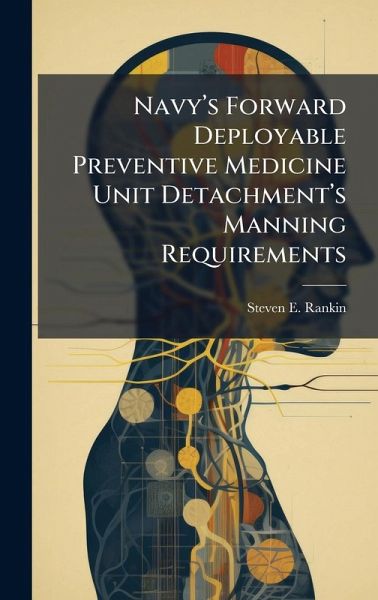
Navyâ€(TM)s Forward Deployable Preventive Medicine Unit Detachmentâ€(TM)s Manning Requirements
Versandkostenfrei!
Versandfertig in über 4 Wochen
29,99 €
inkl. MwSt.
Weitere Ausgaben:

PAYBACK Punkte
15 °P sammeln!
This thesis examines the potential manning shortfalls for the Navy's proposed Forward Deployable Preventive Medicine Unit's (FDPMU) twelve-member Detachment. The twelve-member detachment is derived from the existing twelve-member preventive medicine Mobile Medical Augmentation Readiness Team (MMART)--a Navy medical deployment augmentation program for operational platforms and contingencies. Generally the MMART team was fully employed during deployments but now has the additional Chemical, Biological, Nuclear/Radiological and enhanced Environmental (CBRE) mission taskings. This unit can be task...
This thesis examines the potential manning shortfalls for the Navy's proposed Forward Deployable Preventive Medicine Unit's (FDPMU) twelve-member Detachment. The twelve-member detachment is derived from the existing twelve-member preventive medicine Mobile Medical Augmentation Readiness Team (MMART)--a Navy medical deployment augmentation program for operational platforms and contingencies. Generally the MMART team was fully employed during deployments but now has the additional Chemical, Biological, Nuclear/Radiological and enhanced Environmental (CBRE) mission taskings. This unit can be task organized for fewer personnel but has a twelve-member core detachment necessary to provide coverage to all the technical specialties supported by the full team. The current manning utilized by U.S. DOD units with similar and overlapping mission requirements in the areas of preventive medicine, CBRE, and laboratory capabilities was examined. The number of personnel identified as essential to support those similarities were compared to those proposed for the FDPMU Detachment. The study concludes that the FDPMU Detachment manning requirements are feasible, but as the minimum number of personnel required for basic mission accomplishment in a low threat environment. This work has been selected by scholars as being culturally important, and is part of the knowledge base of civilization as we know it. This work was reproduced from the original artifact, and remains as true to the original work as possible. Therefore, you will see the original copyright references, library stamps (as most of these works have been housed in our most important libraries around the world), and other notations in the work. This work is in the public domain in the United States of America, and possibly other nations. Within the United States, you may freely copy and distribute this work, as no entity (individual or corporate) has a copyright on the body of the work. As a reproduction of a historical artifact, this work may contain missing or blurred pages, poor pictures, errant marks, etc. Scholars believe, and we concur, that this work is important enough to be preserved, reproduced, and made generally available to the public. We appreciate your support of the preservation process, and thank you for being an important part of keeping this knowledge alive and relevant.


